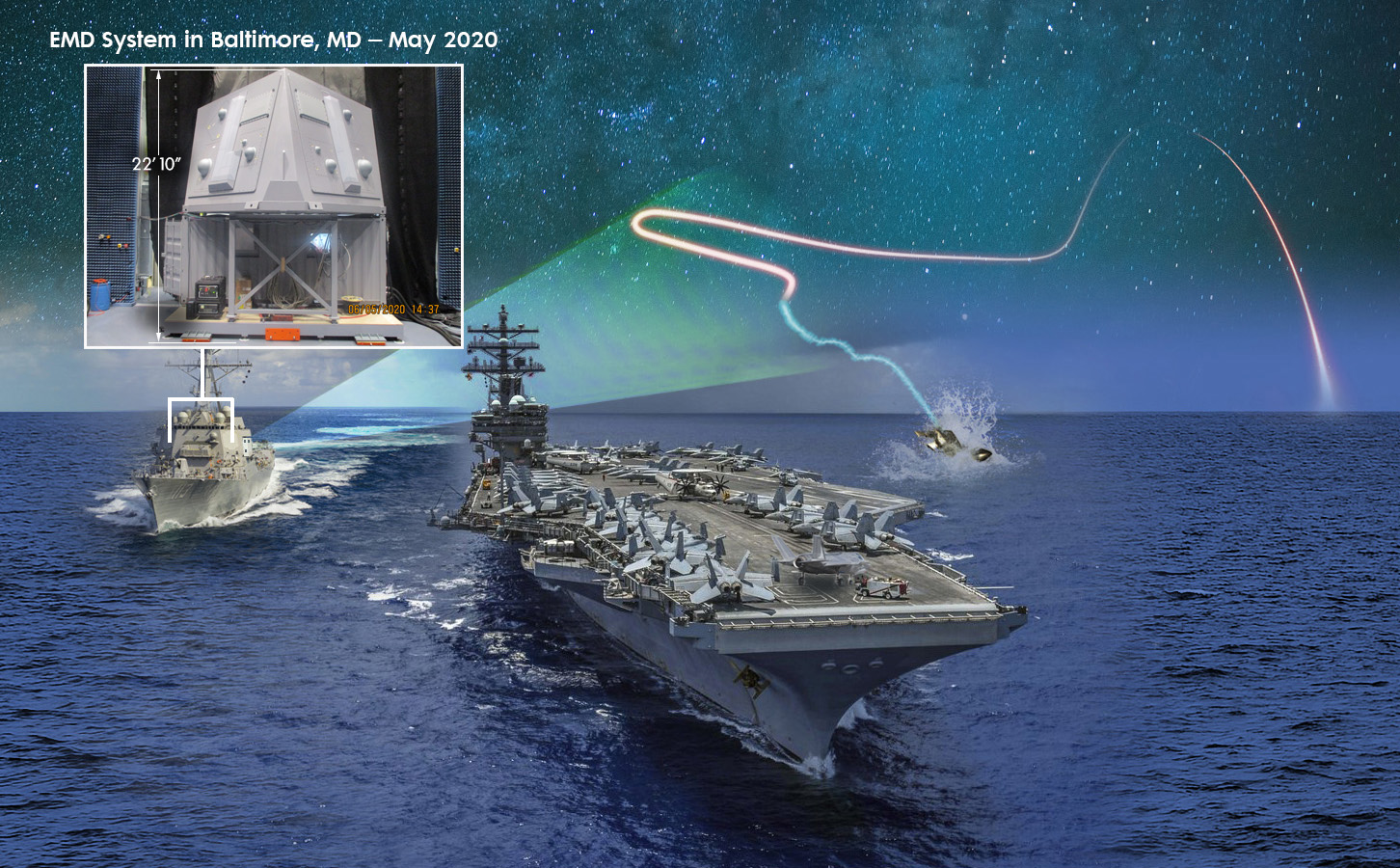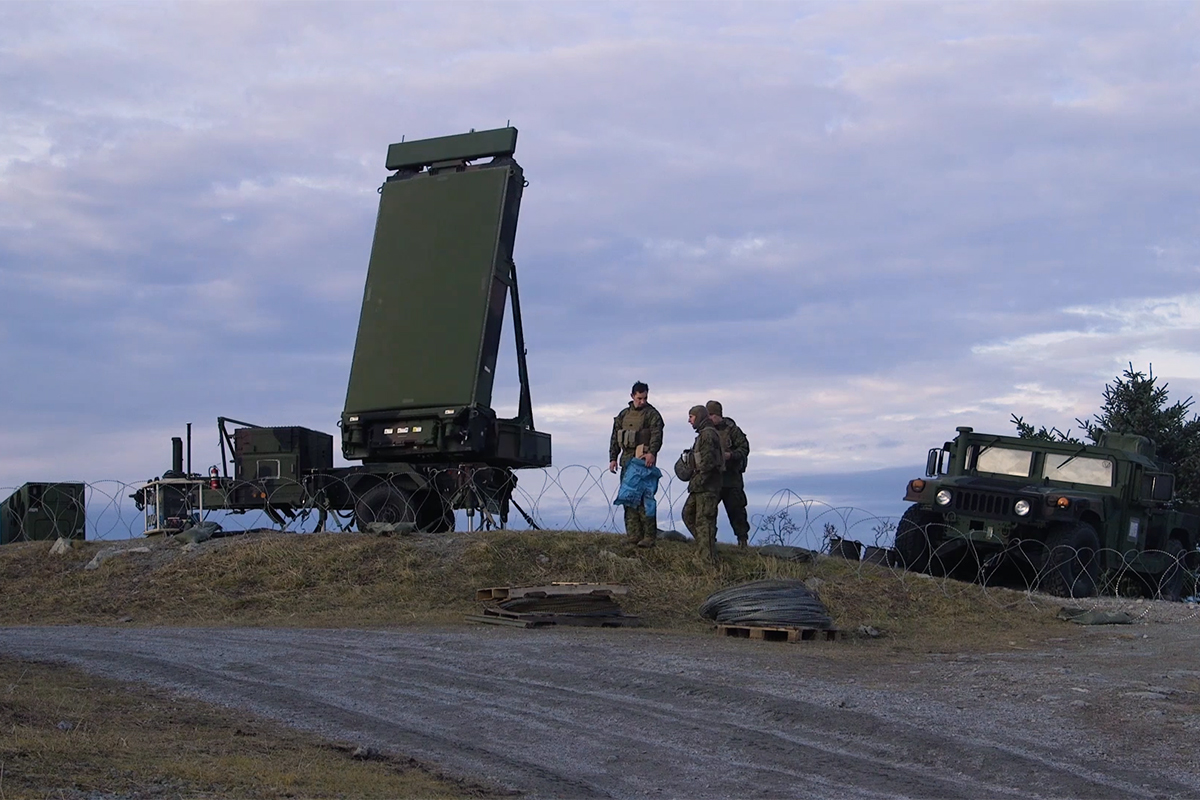
Currently undergoing land-based testing, SEWIP Block 3 is an electromagnetic energy weapon that is capable of disabling enemy anti-ship missiles in mid-flight.
The recent diplomatic announcement that the U.S. and UK will partner with Australia to assist Australia in fielding nuclear-powered submarines grabbed sensational headlines, but the bigger story is what prompted the deal in the first place: the continued, rapid growth of Chinese naval power and the threat it poses to American allies and interests, especially in the western Pacific region.
The past few years have seen multiple encounters between U.S. and Chinese warships in contested areas of the South China Sea. A recent incident occurred this past May, when China accused the U.S. Navy of illegally violating its territorial sovereignty in what the United States considers international waters.
Beijing’s increasingly assertive behavior in the area is backed by what experts say is now the world’s largest navy in terms of numbers of ships. Moreover, China has armed its naval forces with increasingly capable anti-ship missiles.
In response to these and other naval threats, including from perennial adversaries Russia and Iran, the U.S. Navy has adopted a warfighting concept known as Distributed Maritime Operations (DMO). In broad terms, DMO marks a shift away from increasingly vulnerable large platforms operating as a group and toward a widely dispersed but highly networked fleet of mostly smaller vessels and intelligence/surveillance/reconnaissance aerial platforms, both manned and unmanned, integrated closely with a broad array of sensor and weapon systems for maximum domain awareness, survivability, and lethality.
DMO is closely tied to the Defense Department-wide Joint All-Domain Command and Control (JADC2) concept, which aims to connect sensors across the military services into a single network, according to Tom Wears, director of strategy and mission solutions at Northrop Grumman’s Maritime/Land Systems & Sensors division.

Tom Wears, director of Strategy & Mission Solutions, Northrop Grumman. Photo courtesy of Northrop Grumman.
“There’s a subtle difference between DMO and JADC2,” said Wears. “Distributed Maritime Operations is a fleet operating concept. But it’s supported by Project Overmatch, which is the Navy’s instantiation of the JADC2-like objectives.”
Each of the services has its own contribution to JADC2 based on unique service needs and capabilities, Wears said, noting the Army’s Project Convergence, the Air Force’s ABMS (Advanced Battle Management System), and Project Overmatch at the Navy. “At the end of the day, all three of those separate approaches need to tie together into this JADC2 architecture.”
DMO and Project Overmatch represent the Navy’s response to advances in networking and sensor technologies and the evolving threat environment, Wears said. The latter includes the proliferation of sophisticated weaponry, such as hypersonic missiles and long-range sensors that are able to put the traditional U.S. carrier battle groups at risk, he said.
The Navy is not alone in its shift toward more distributed architectures to enhance resiliency. The recently established U.S. Space Development Agency, for example, is investing in large constellations of closely networked satellites for critical missions like missile surveillance and communications, a paradigm shift driven by the vulnerability of the larger platforms that the Pentagon has relied on for decades.
“There are advantages in not concentrating forces and spreading out the structure so that there is much wider reach of sensors to surveil the area,” Wears said, referring to the DMO philosophy.
A Navy Structure That Includes Large, Small, and Unmanned
A shipbuilding blueprint released in June by the Biden administration as part of its 2022 budget request marked a shift away from previous plans for a 355-ship Navy toward a smaller but more distributed fleet architecture featuring a combination of manned and unmanned vehicles. The blueprint specifically calls for 321 to 372 manned ships and 77 to 140 large unmanned vehicles.
“The Navy and the Department of Defense have been working since 2019 to develop a successor for the 355-ship force-level goal. The new goal is expected to
introduce a new, more distributed fleet architecture featuring a smaller proportion of larger ships, a larger proportion of smaller ships, and a new third tier of large unmanned vehicles,” states a September report from the Congressional Research Service (CRS) entitled, “Navy Force Structure and Shipbuilding Plans: Background and Issues for Congress.”
That means fewer big ships like large-deck aircraft carriers, cruisers,
destroyers, and large amphibious and resupply, balanced out by more smaller ships like frigates, corvettes, smaller amphibious and resupply ships, and possibly even smaller aircraft carriers. The new third tier of surface vessels would be about as large as corvettes or large patrol craft that will be either lightly manned, optionally manned, or unmanned, as well as large unmanned underwater vehicles.
In the present day, however, the service must support DMO and Project Overmatch with existing capabilities, Wears said.
“The near-term challenge is figuring out how we can use what we currently have and evolve it to the extent that we can, and in a short period of time start providing JADC2-like capabilities to the fleet,” Wears said. “This will build and mature progressively. More platforms will be brought into the structure and new types of communication systems and networks will be applied over time. At the end of the day, they all tie back together into this JADC2-type architecture.”
Well Positioned for DMO
With platforms and sensors deployed in all domains, from seabed to space, Northrop Grumman is well positioned to support the transition, Wears added.
“We are uniquely positioned to listen to the Navy’s operational needs and help them understand potential solutions to meeting those needs by bringing together platforms and sensors that may or may not have traditionally supported maritime missions, but we’ve shown that they can if they are brought together properly,” he said.
Indeed, Northrop Grumman is a major supplier of U.S. military ships, manned and unmanned aircraft, and satellites, as well as the sensor and communications payloads these platforms carry. Two of the company’s near-term offerings that are specific to DMO and Project Overmatch are the U.S. Marine Corps’ Ground/Air Task-Oriented Radar (G/ATOR) and Surface Electronic Warfare Improvement Program (SEWIP) Block 3 program.
The G/ATOR effort consolidates the missions of five different families of Marine Corps radars into a single

Mike Meaney, vice president of Northrop Grumman’s Maritime-Land Systems & Sensors division. Photo courtesy of Northrop Grumman.
system, explained Mike Meaney, vice president, Land and Maritime Sensors for Northrop Grumman. “Rather than having five completely different radar families and the sustainment that goes with each, it’s one set of hardware with software applications to switch between the Marines’ various missions.”
An active electronically scanned array (AESA), G/ATOR, quickly identifies airborne objects, including rockets and even artillery shells, and determines where they are aimed, Meaney said. It also can identify where the projectiles came from, giving friendly forces the opportunity to engage the threat before a second round can be fired, he said.
“It’s a flexible system and fundamentally software defined, which allows us to expand it to new and different missions in straightforward ways. It can also interact with a variety of weapon and sensor systems operating in different domains.”
In September, the U.S. House of Representatives approved a defense bill that authorizes $645.4 million in spending in 2022 on G/ATOR, more than double the $297.4 million the Pentagon requested. The full Senate has yet to vote on its version of the legislation, a draft of which matches the House-approved G/ATOR funding increase.

The G/ATOR program consolidates the missions of five different families of Marine Corps radars into a single system.
G/ATOR provides the type of situational awareness that is foundational to DMO mission, according to Meaney.
Northrop Grumman recently delivered the 15th G/ATOR system to the Marine Corps, completing the low-rate initial production phase of the program. The team also recently fielded the first full-rate production G/ATOR system and expects to continue deliveries through 2024, the company said.
Meanwhile, land-based testing is underway on SEWIP Block 3, an electromagnetic energy weapon that is capable of disabling enemy anti-ship missiles in mid-flight. “Electronic attack systems like Block 3 provide the ship’s commander and crew an unlimited magazine of non-kinetic bullets to knock down these anti-ship missiles,” Meaney said.
In June, Northrop Grumman announced that it had delivered the first SEWIP Block 3 engineering and development model to the Navy for testing at Wallops Island, VA. The first two limited-production-rate units are slated for delivery before the end of 2021 and will be installed aboard Arleigh Burke-class destroyers for sea trials.
“Having the ability to non-kinetically engage multiple targets simultaneously saves the kinetic weapons in the missile hold of the ship for offensive needs rather than defending the ship against anti-ship missiles,” Meaney said. “Ships are limited to how many kinetic weapons they can carry, so this is a force multiplier in many different ways for the Navy.”
Like G/ATOR, SEWIP Block 3 is a software-defined system that can be readily reconfigured to other radio frequency missions, including electronic attack, signals intelligence, communications, and basic radar functions. Although the Navy has not specifically requested these functions, they provide the kind of flexibility that fits with modern war fighting concepts like DMO and JADC2, said Meaney.
In an interview with Breaking Defense in June, Bryan Clark, a former Navy commander and electronic warfare expert with the Hudson institute, said he hoped that the Navy would eventually exploit the multi-functionality of SEWIP Block 3. “The digital AESA array it uses could enable it to be a jammer, receiver, radar, or radio,” he said.
Doing so would enable the ship-based SEWIP Block 3 to be part of a networked electronic warfare architecture that includes aerial or surface drones, Clark said, adding that this will make the ship more difficult to target by adversaries.























